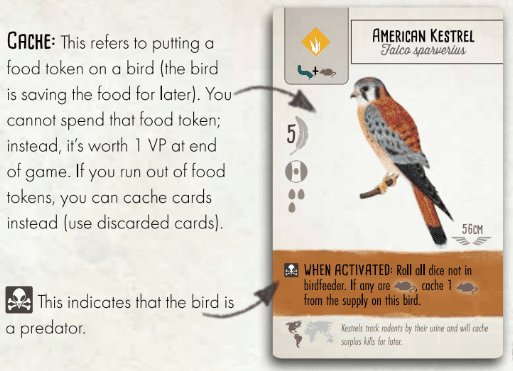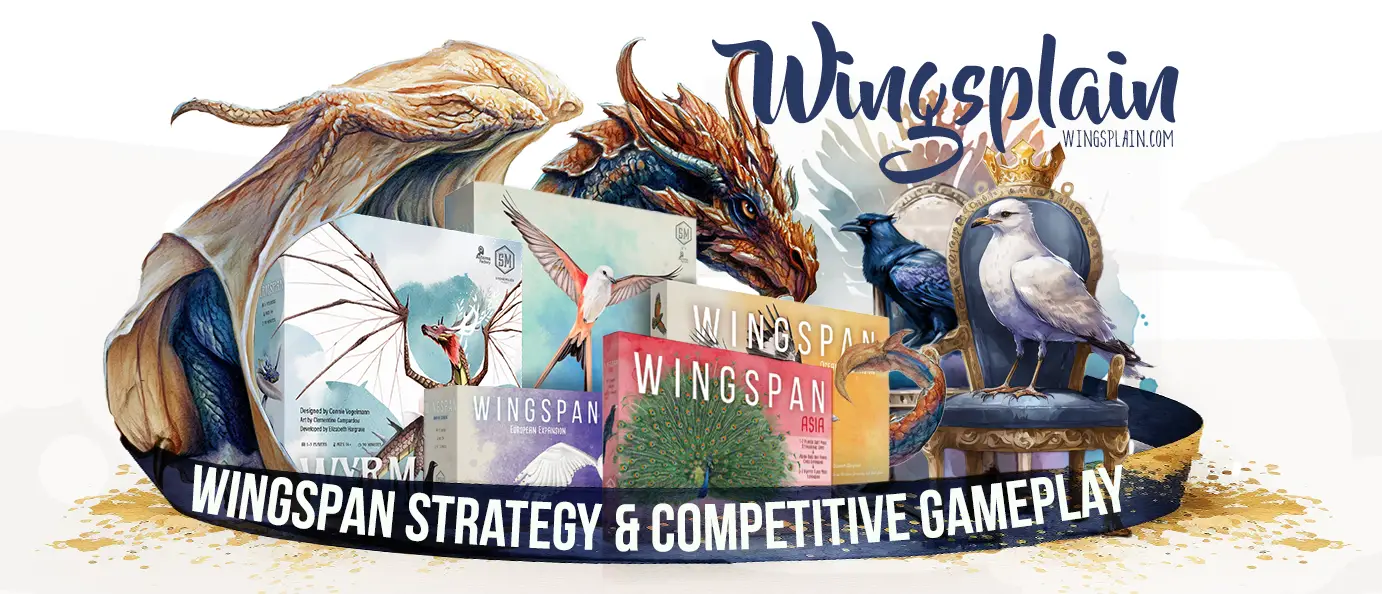When a predator succeeds at its power, it means that it successfully cached food, tucked a card, or otherwise worked despite a potential chance at failure. Many predator powers do not succeed 100% of the time.
One example would be Great Horned Owl, which looks at the top card of the deck and tucks that card if it has a wingspan less than 100 cm. This power succeeds about 89% of the time. Since the Owl has the predator tag (“skull and crossbones” symbol), if it tucks a card from its power, that counts as a success.
Another example would be Willet, which rolls all dice outside the birdfeeder and caches a fish if one is rolled. If Willet caches a fish, that counts as success. At four dice, this power is successful about 50% of the time. Since Willet has the predator tag (“skull and crossbones” symbol), if it caches food from its power, that counts as a success.
A less obvious predator power success would be using Montagu’s Harrier’s ability to be played on top of another bird without paying food to do it. Since it has the predator tag (“skull and crossbones” symbol), using this power counts as a success. This power technically succeeds 100% of the time when you use it.
Another less obvious power success would be using Northern Goshawk’s ability to tuck up to two cards instead of using rats to pay for its food cost. If an opponent substitutes even a single tuck for a rat while playing the Goshawk, that counts as a success since it has the predator tag (“skull and crossbones” symbol).
What does the skull symbol mean in Wingspan?
The skull symbol, or “skull and crossbones” symbol, means that a particular bird counts as a “Predator.” Page 10 of the Core Set rule book covers this.

